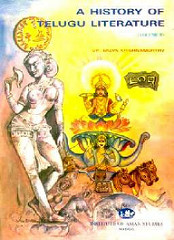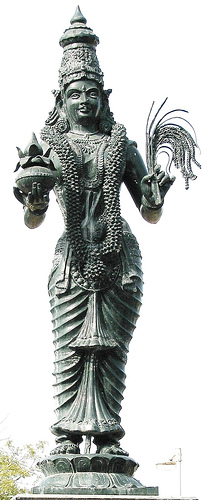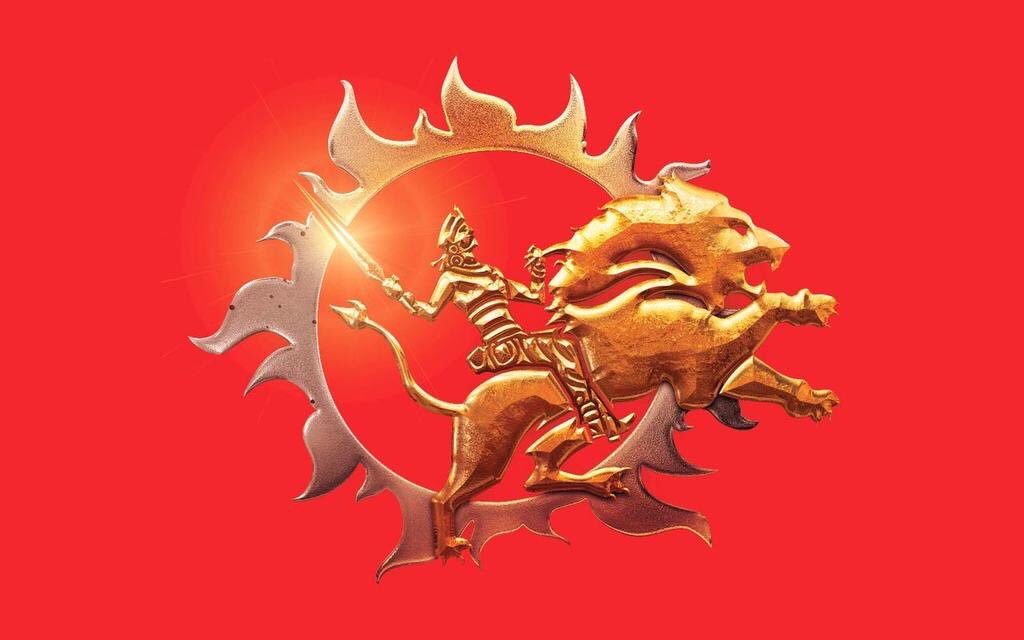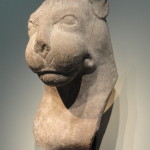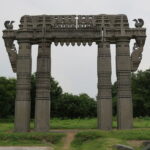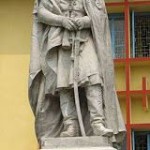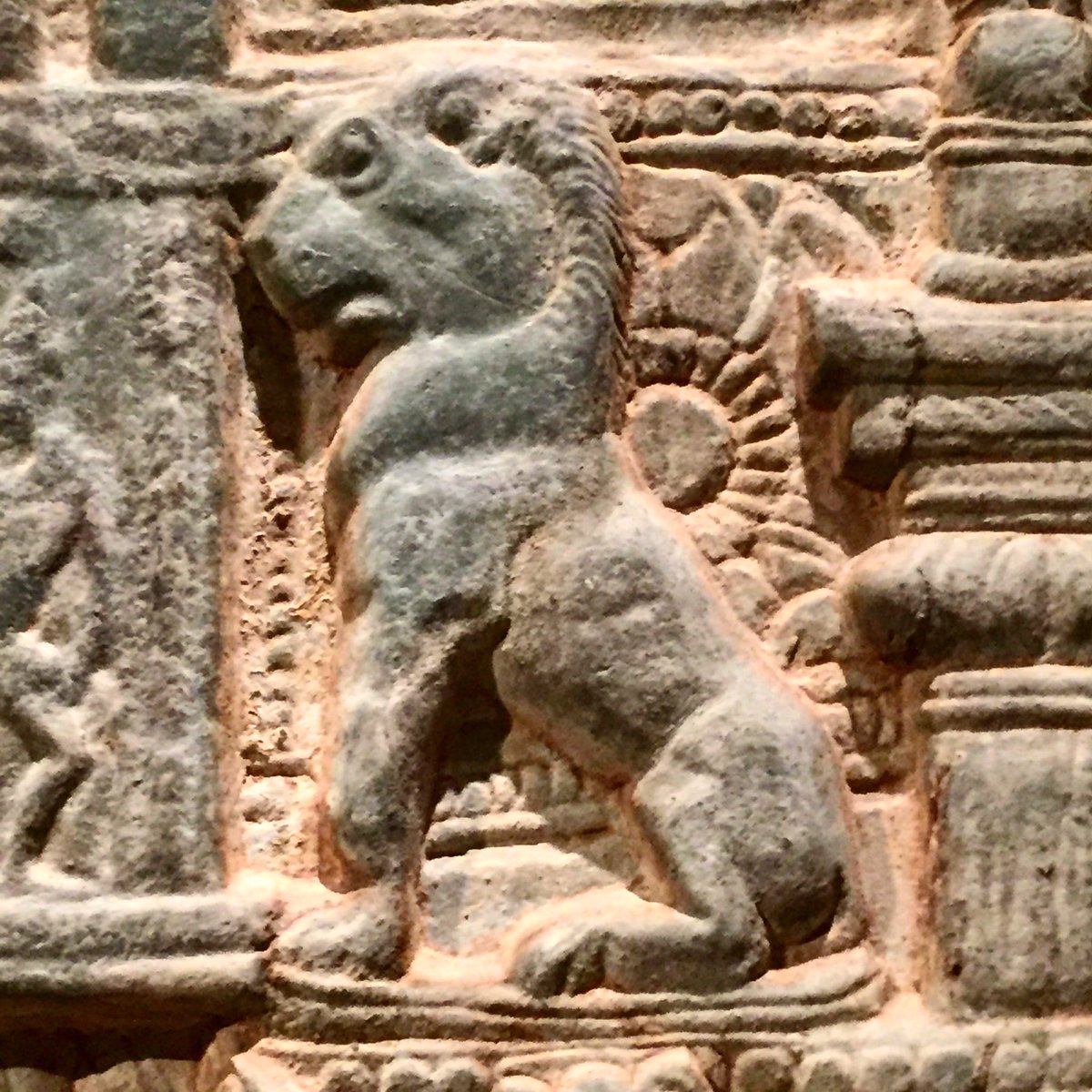
ఆంధ్ర సీరీస్ లో మన ప్రథమ వ్యాసం తెలుగు జనాల మూలం ఏమిటో దగ్గరి చూసి అడిగాము, “ఆంధ్రులు ఎవరు?”. ద్వితీయ సర్గం లో మన ఆంధ్ర జనాల ప్రాచీన ఇతిహాసము మరియు తేనె కి మించిన మన తీయమైన భాష చూస్తాము. ఈ ద్విభాష వ్యాసము ఆంగ్లం కింధ భాగములో రచించాము.
In the first article of our series on The Andhras, we explored the origin of the Telugus and asked “Who are the Andhras?”. The second installment will investigate the early history of the people & the language that is sweeter than honey. This bilingual article will feature the English version at the bottom half.
ప్రస్థావన
మన తీయమైన తెనుగు సామాన్య సంవథ్ లో మూడో శతాబ్దం లో మొధలైనధి అని ఆధునిక చరిత్ర విద్ధ్వాంసులు అంటారు. కానీ, ఈ వాదన మన ఊరి చరిత్రలు ని జోక్యం చేసుకుంటుంది. పండిత్ కోట వెంకటచలం గారు రచించినట్టు ఇటువంటి వాక్యాలు మన చరిత్రని ఇలా చెడ కొట్టి నందుకు మనకి నవొస్థుంధి.
అందునించి, మన భారతీయ సంస్కృతి వెబ్సైటులో రచించినట్టు విజ్ఞానము ని మన పరంపరం తో సమతుల్యం చెయ్యాలి. సైంటిఫిక్ పురావస్తు తవ్వకాలు ప్రకారరాం చూస్తె, ఒక జనాల చరిత్రం నిజమా కాద అని తెలుస్కోవ్వచు.
అధి చెయ్యాలంటె, ప్రథమ పని తెలుగు పండితులువ్రాసిన చరిత్రము చదువాలి. ఆ మహానుభావులు మన సత్యమైన చరిత్రం ని రచించి, రక్షించి, ఆగమి తరంకి అందించారు.
Introduction
Mana theeyamaina Telugu is often dated to the 3rd century BCE. This assertion is based primarily on epigraphic evidence and ignores the local narratives. However, as Pandit Kota Venkatachalam garu asserted, this type of speculative reconstruction often produces guffaws and risible results with respect to the true history of a people.
Therefore, as was asserted in our Series on the Chronology of Indian history at our mother site, indicportal.org, it is important to balance science with tradition. Scientific archaeological excavations and carbon-dating based analysis can verify what our local histories have laid forth, but it is the Tradition that should provide balance with the oral and historical memory of a people.
In order to do that, one must begin again by studying the works of the traditional scholars and Telugu Pandits who recorded, preserved, and passed on the traditional history of the Telugus, and indeed, of Telugu itself.
మూల చరిత్ర
పండిత్ కోట వెంకటాచలం గారు స్థాపించినట్టు, ఆర్య అధిక్రామ సమ్మూద్దేశ అసత్యం, మరియు వేద ప్రకారము ఆర్యులు భారత దేశము లోనే పుట్టారు.ధీని ప్రకారము సర్వ భారతీయులు—ద్రావిడ్లు కూడ—అందరు ఆర్యులే, బ్రహ్మవర్థం నించి (సరస్వతీ-సింధూ లోయ ధగ్గర).
అందునించి, “ఆంధ్ర భాష, తెలుగు భాష” ద్రావిడ-జాతి అని వాక్యం అసత్యం. ఈ హింశ్రమైన సమ్మూద్దేశం కి మూలం, ఒక ఆంగ్ల కిరస్తాని విద్వాన్,కాల్డ్వెల్. ఇటువంటి సమ్మూద్దెశాలు ఆఫ్రిక లో కూడా కిరస్తానిలు సృస్టించారు. ద్రావిడ్లు (స్పష్టంగా చెప్పాలంటి ద్రావిడ-దేశ జనాలు), సరళం గా చెప్పాలంటె, ఇంకొక ఆర్య శాకం—దక్షిణ ధిక్కుకి ప్రయాణం చేసి, ద్రావిడ దేశం (కేరళ మరియు తమిళ్ నాడు) ని స్థాపించారు. అందునించి, నిస్తావం బ్రాహ్మణ పండితులు రచించినట్టు, ఆంధ్రులు ఆర్యులే, నాలుగు వర్ణాలు అంధరు ఆర్యులే.
ఆంధ్ర దేశ—ఆంధ్ర భూమి. త్రిలింగ దేశ—మూడు లింగాల భూమి, కాళేశ్వరం, భిమేశ్వరం, శ్రీశైలం లో. అమరావతి అమారేశ్వర కి గృహము. తెలుగు జనాల కి ప్రాచీన నామ, “ఆంధ్ర”.
ఒక సమ్మూద్దేశం ఉండేధీ ఆంధ్రులు మహర్షి విశ్వ మిత్రుని పుత్రులు అని, మరియు ఐన వాలని బహిష్కారం చేశారు, సునసెఃప కాలం లో. కానీ, పండిట్ కోటా వెంకటచలం ప్రకారము, ఇధి తప్పు—ఈ సమ్మూద్దేశం కూడా ఆంగ్ల రాజ్యం అప్పుడు సృస్టించీనధి. పండిత్ గారు చెప్పిన విధి లో, ఇంకో ఆంధ్ర జాతి (జలాంధ్ర జాతి, ఆధునిక పంజాబు రాష్ట్ర లో జలంధర్ ఊరు ఉన్నటూ) అని పేరు తో ఉందేధి, మరియు వాళ్ళు వింధ్య పర్వతం ని ఎక్కి తారించారు అని ఉపపత్థి లేధు. కొని ఆస్తిక సాంస్కృత విద్యము చెప్పినట్లు కొంధరు ఆంధ్రులు “వ్రాత్య” అయ్యీ చాతుర్వర్ణ మర్యాద నించి భైటికి వెలున్దచ్చు కానీ, ఇటువంటి అర్థకరణ, విదేశి మ్లేచలు కి వదిలె బదులు మన ఆస్తిక పండితులు కి వదలితె శ్రేష్టం.
ఈ పేరు కి మూలం, పండిత్ చేలం చెప్పినట్టు, ఆంధ్ర రాజ, సోమవంశీ కులం నించి, యయాతి రాజా కి వంసజ్. దీనికి ప్రమాణం, భాగవత పురాణము, అందునించి ఐన ఆంధ్ర నరపతి, లేకపోతే, నృపతీ అని పిలుస్తారు.
పూర్వ కాలం లో విషయాలు ని పిలిచె స్థానాలు, ప్రాచీన జిల్లాలు ఆంధ్ర దేశం లో తరువాత “నాడు” అని పిలిచేవాళ్ళు.
సమాకాలం లో, తెలుగు జనాలకి మూడు ఆంధ్ర స్థానాలు తెలుసు (రాయలవారిసీమ, తెలంగాణా, కోస్తా), కాని పూర్వ కాలం లో అష్ట నాడులు మధ్యకాలం లో ఉండేవి. ఇవి ఇట్ట్లు:
- వేంగీ నాడు, గోదావరి కృష్ణ నధులు కి మధ్య ఉందె నాడు [రాజమహేంద్రవరం ఇక్కడ ఉన్నధి]
- ములికి నాడు, కడప జిల్లా నించి కర్నాటక రాష్ట్రం వరుకు
- పొత్తపి నాడు, కడప నించి పెన్నెరు వరుకు
- రేనాడు [మానాడు], కర్నూల్ డిస్ట్రిక్ట్
- పల్నాడు, గుంటూరు కి పశ్చిమం
- పాకనాడు, సముద్ర తీరం, ప్రకాశం నించి కృష్ణ వరుకు
- కమ్మానాడు
- వేలనాడు.
ఇంకొక విషయం కూడా చెప్పాలి, స్పష్టమైన సీమలు ప్రతి కాలం లో మార్పు ఉందేధి, వేరు వేరు రాజ్యాలు గెలిచి ఓడి పో నప్పుడు. కాకతీయ సామ్రాజ్య కాలం లో ఇంకా పెద్ద గా ఉండేవి, పూర్తి సమైక్య ఆంధ్రముని పాలించేవారు.
- అనుమకొండ నాడు (వరంగల్ & హనుమకొండ)
- సబ్బీ నాడు (కరీంనగర్/ఎలగండల డిస్ట్రిక్ట్)
- విసూరు నాడు
- పల్లి నాడు
- అయిజా నాడు
- గోండల నాడు
- మింగల నాడు
- కాందూరు నాడు
- కుశల నాడు
- నేరవది నాడు
- పొంగలీ నాడు
- కారు నాడు
ఈ క్షేత్రాలు ఆంధ్ర చరిత్రము లో. ఎటు ఐన, పల్నాడు కి ముఖ్యమైన స్థానం ఉన్నధి, ఆంధ్ర కురుక్షేత్రం ఆ యుద్ధభూమి నించి మరియు శ్రీనాథ కవిసార్వభౌమ మహాకావ్యం నుండి.
ఈ త్రిలింగ దేశ చరిత్ర దృశ్యం కి చూపించడంవల్ల, ఇప్పుడు మన ప్రియమైన మాతృభాష గురించి చదువచ్చు.
ఆంధ్ర తెలుగు అంటే ఓకే అర్ధం
ప్రథమం, ఒక ముఖ్యమైన విషయం ఇధి: ఆంధ్ర తెలుగు ఓకటే. వర్ధమానం లో, కావల్సని ఈ శబ్ద బ్రమ సృష్టించడానికి, ఆంధ్ర ఒట్టి కోస్తా అని అర్ధం తో ఈ ద్రోహిలు మాట్లాడుతున్నారు.
సత్యవచనము ఇధి: ఆంధ్ర, త్రిలింగ దేశ, తెలంగాణా పాత కాలం లో అంతా తెలుగు భూమి అని అర్ధం మరియు ఆంధ్ర భాష మాట్లాడే వాళ్ళు ఆంధ్రులు. గౌరవనీయులైన విద్వాంసులు కూడా ఇధే మాట చెప్పారు.
మన ఆస్తిక తెలుగు పండితలు ని నమస్కరించాలి—వాళ్లే తెలుగు “ద్రావిడ భాష” కాదు అని
పోరాటం చేశారు. మొదటి నించే స్పష్టంగా—మనంధరికి తెలిసిన విషయం—చెప్పారు:
తెలుగు, సాంస్కృత పుత్రి.
అనగనగా అని ఎన్నో కథలు ఉన్నాయి తెలుగు గురించి. ఒక దాంట్లో ఒక మానవ, అగ్నిమిత్ర అని, అందుడు ఐపోయ్యార్డు, పక్కనున్న వేడి నించి. సూర్య దేవ కి ధనం పెట్టిన తరవాత, తన సూర్యుడు నించి నేర్చ్కున్నారు “ఈ భాష కి , ఎంత శక్తి ఉందంటే, తన కళ్ళు మళ్లీ స్థాపించింది. ఈ భాష, ఆంధ్ర భాష, ఎందుకంటే అంధకార ని నాశనం చేసింధీ. ప్రతి యుగం లో తెలుగు ఒక రూపం లో వస్తున్ధి మరియు ఈ కలి యుగం లో (ఆధున యుగం)
కళింగాంధ్ర మరియు రౌధ్రాంధ్ర నంధివార్ధన తన శిష్యుడు దేవాల రాయ తో స్థాపించారు, శాతకర్ణి రాజ్య కాలం లో.” వర్ధమానం లో ‘ఆంధ్రులు అంధులు’ అని అంటారు కానీ ఆంధ్ర భాష అంధకార ని నాశనం చేస్తుంధి.
సత్యమైన మూల కధ మహర్షి కన్వది అని అనిపిస్తుంధీ. తెలుగు ప్రతి యుగం లో మళ్లీ మళ్లీ పుట్టుతుంధీ. సత్య యుగం లో, అగ్నిమీత్రుడు తో మొదలైంధీ. త్రేతా ద్వాపర లో మహర్షి కన్వ. కలి యుగం లో నందివార్ధన తో. అందరికి కన్వ ముని శకుంతల పిత్రుదు అని తెలుసు. ఆయనే మొధటి తెలుగు వ్యాకరణము రచించారు అని పేరు. ఆధునిక చరిత్రము ప్రకారము నన్నయ భట్ట గారు మరియు ఆయనే ఆంధ్ర శబ్ద చింతామణి, మన తెలుగు పురాణ-లక్షణ ప్రకారం ఇంకా ప్రాచీనం.
ప్రథమ తెలుగు వ్యాకరణం ఋషి కన్వ రచించారు—నిస్సందేహం—కానీ ప్రశ్నం ఏంటంటే, జలాంధ్రులు ఎలా ఉన్నారు ద్వితీయ తృతీయ కన్వ మునిలో ఉన్నాయ. బ్రాహ్మణులు కన్వ శాఖం ఎలా ఉన్నధో, పండిత్ చేలం గారు అది ప్రథమ కన్వ మహర్షి కాధూ కానీ ఆయన వంశ వృక్షం లో వారసుడు.
ఏది ఏమయినప్పటికీ, సాంప్రదాయ తెలగులో మూల చరిత్ర ఆధారంగా, కన్వ మహర్షి త్రేత యుగానికి చెందినదిగా పేర్కొనబడింది, అతను అసలు వ్యాకరణాన్ని రచించాడని నమ్మడానికి కారణం ఉంది. అంతేకాకుండా, బౌధాయన యొక్క ప్రముఖ స్వరకర్త బౌధాయన ధర్మసూత్ర మరియు ఆంధ్ర ప్రజలకి తెలిసిన సభ్యుడు, అతను అసలు మహర్షి కన్వ కుమారుడు. శకుంతల పెంపుడు తండ్రి అత్యుత్తమమైన వ్యాకరణకర్త ఐతే, ఆంధ్ర శబ్ద చింతామణి మొదటి వ్యాకరణము కాదు.
Historical Origins
“The Telugu language does not seem to be as ancient as Tamil, though it is more ancient than Malayalam, and at least of equal antiquity with Kanarese. It is not possible to say with any certainty when the language now known as Telugu came into vogue.” [2, 16]
As Pandit Kota Venkatachalam garu trenchantly established, the Aryan Invasion Theory is false and the Vedic tradition actually asserts the Out of India Theory. This means that All Indians, yes—even “Dravidians”, were in fact Aryans, who originated in Brahmavarta (modern Sarasvati-Sindhu Valley).
Thus, the assertion that the Andhra People and the Telugu Language are Dravidian is false. This mischievous theory originated with the Colonial British Christian Missionary Caldwell. Similar theories were sown by similar missionary scholars in Africa. The Dravidians (or more correctly, Dravidas), simply another branch of Aryans, who migrated south and founded Dravida desha (modern Kerala & Tamil Nadu). Therefore, as orthodox Brahmin Pandits assert, Andhras are Aryans, and all four varnas were considered Arya.

Andhra Desa—the land of the Andhras. Trilinga Desa—Land of the Three 3 lingas at Kaleshvaram, Bhimeshvaram, and Srisailam. Home of Lord Amareshvara of Amaravati. The classic and historic name for the people now known as Telugu is Andhras [2, 14]
The language of the Andhras is variously known as Andhra Basha, Telugu and Tenugu. These appellations are used synonymously. [3, viii]
There is a popular legend that Andhras were in fact the sons of Maharishi Vishvamitra, and were disowned by him during the Shunashepa episode. However, Pandit Kota Venkatachalam has categorically denied this and asserted that this theory dates back to the colonial period. Per Pandit gaaru, the Andhras referred to here were the jalandhras (associated with the eponymous Jalandhar in modern Punjab), and there is no evidence that they crossed the Vindhyas. While there are traditional Sanskrit scriptures that mention some “Andhras” becoming vratya (leaving the Arya fold), it is best to leave interpretation to the traditional Pandits like Sri Kota Venkatachalam rather than motivated foreigners.
The origin of this name as established by Pandit Kota Venkatachalam is King Aandhra of the Lunar dynasty, and descendant of Yayati. This is based on the Bhagavata Purana, and he is therefore known as Andhra Narapathi or…Nripathi.
“The Bhagavata states that the country was named after King Andhrudu…Andhra Desa was also known as Vengi Desa. It is however probably that the
Andhra Desa was also known as Vengi Desa. It is however, probably that Vengi was a part of the Telugu country—The part which lay between the Godavari and the Krishna. The name ‘Trilinga’ was often applied to the Telugu country. This may have been used to signify either the country which contains the three shrines (lingas), namely, those at Kalesavaram, Sri Sailam and Draksha Ramam, or the country between these shrines. “ [2,14]
Earlier known as vishayas, the ancient divisions of Andhra were later called ‘nadus’.
Though most Telugus today are familiar with the sub-regions of Andhra (Rayalaseema, Telangana, & Kosta) there are 8 Historical territories (nadus) within Historical Andhra Desa. These are as follows:
- “Vengi Nadu, the territory between the Godavari and the Krishna [some consider this to be the original homeland of the Telugus, with a capital at Rajamahendri]
- Muliki Nadu, beginning with the Kadapa District and extending to [Karnataka]
- Pottapi Nadu, from Kadapa to Penneru
- Renadu [also known as Maanaadu], Kurnool District
- Palnadu, West of Guntur
- Paakanadu, the coastal tract from Nellore to Krishna”
- Kammanadu
- Velanadu
It should also be mentioned that the exact geographic limits would vary over time as kingdoms rose and fall. They were more expansive during the time of the Kakatiyas who ruled over all of Samaikya Andhra, which gives us additional units [3,78]:
- Anumakonda Nadu (around Warangal & Hanumakonda)
- Sabbi Nadu (present day Karimnagar/Elagandala district)
- Visuru Nadu
- Palli Nadu
- Ayija Nadu
- Gondala Nadu
- Mingala Nadu
- Kanduru Nadu
- Kusala Nadu
- Neravadi Nadu
- Pongali Nadu
- Karu Nadu
Some accounts give us as many as 20 Nadus for all of old united Andhra.
These regions all have featured significantly in the history of Andhra. Nevertheless, Palnadu has a special place due to the famous Andhra Kurukshetra that took place on its fields and the Epic Poem by Srinatha that it is inspired.
Having provided a deeper overview of the origin and history and geography of historic Trilinga desa, one can now survey our beloved mother tongue of Telugu in detail.
Andhra and Telugu mean the Same Thing
First and foremost, it is critical to reassert that that Andhra and Telugu mean the same thing. In the present time, there has been much (purposeful) confusion of the terms and treacherous parties have sought to restrict the word Andhra only to Coastal Andhra. In reality, Andhra, Trilinga Desa, and Telangana all refer to the land of the Telugus or the speakers of the Andhra Bhasha. Reputed scholars on the History Telugu literature have asserted this as well.
“Andhra Bhasha—the language of the andhras. This is known as telugu, or Telugu (tene=honey, agu=is), meaning, sweet as honey.” [2,15]
Credit should also be given to our traditional Telugu pandits who opposed the classification of Telugu as “Dravidian” root and branch. From the beginning they asserted what colloquially many of us know today: Telugu is Daughter of Sanskrit.
“Dr.Caldwell, in his Comparative Grammar, has given currency to the theory that they are unrelated to Sans-krit. Sharply opposed to this theory is the view, maintained by all Telugu grammarians and Sanskrit philologists, that Telugu is Vikriti—that is a language formed by the modification of Sanskrit and Prakrit. An analysis of the language as it has been for centuries confirms the traditional view.” [2, 15-16]
“It would appear that very early the Andhras adopted a form of Prakrit which, in the course of development, became the immediate ancestory of Telugu and Kanarese” [2, 16]
There are of course a number of legends associated with Telugu. One is that a man named Agnimitra lost his eyes on account of being surrounded by tremendous heat. After praying to the Solar Deity (Surya Deva), he was taught “a language so potent that it restored him his eyesight. This language was called Andhra Bhasha, as it dispelled darkness. We are also told that each yuga had its particular form of Telugu and that in Kali Yuga (the Present Age), Kalinga Andhra and Raudra Andhra were established by Nandivardhana and his disciple, Devala Raya, in the reign of Satakarni.” [2, 17]
Perhaps the origin story with the most credence involves Maharishi Kanva. Telugu is said to revive in each Yuga. At the end of the Satya Yuga, it originated with Agnimitra. In the Treta and Dvapara it is credited to Maharishi Kanva. In the Kali, Kaling-Andhra and Raudr-Andhra together were established by Nandivardhana and his disciple Devala Raya. This was done during the reign of Emperor Satakarni (likely the first of that name). [2, 17] Best known as the foster-father of Shakuntala, Kanva Maharishi is credited with writing the first grammar of the Telugu language. While modern history attributes this title to Nannaya Bhatta and his Andhra Sabda Chintamani, the Puranic bonafides of Telugu accord a much greater antiquity to it. Pandit Kota Venkatachalam garu again provides crucial details.
While averring without a doubt that Rishi Kanva wrote the first grammar, the question has arisen whether, much like the Jalandhras, whether there were multiple Rishi Kanvas. Due to the existence of the Kanva sect of Brahmanas, Pandit gaaru speculated on the possibility that it may likely not have been the original Kanva Maharshi, but a descendant.
Nevertheless, based upon the oral history among orthodox Telugus, and given that Kanva maharshi is dated to the Treta Yuga, there is reason to believe he wrote the original grammar.Furthermore, when weighed against the fact that Baudhayana, the famed composer of the Baudhayana Dharmasutra (eventually superseded by Apastamba) and known member of the Andhra people, is himself the son of the original Maharishi Kanva, this makes the foster-father of Shakuntala the most likely original grammarian of Telugu.Either way, Nannaya garu will have to move aside, and credit for the original grammar should be attributed to Kanva Maharshi’s opus rather than the current standard of Andhra Sabda Chintaamani.
భాష లక్షణ
తెలుగు భాష రూపం మధురం గా ఉంటుంధీ మరియు సభ్యతం గా ఉంటుంధీ. భాష నిర్మాణీ క విశేషాల్లో, శిక్ష నిరుక్త మరియు శబ్ద చాలా ముఖ్యం.
తెలుగు భాష రకాలు మూడు రకా ల్లో ఉంటుంధీ: గ్రాంధికం, మాండలికం, జానపాదం. మామల భాష ని వాడుక భాష అని కూడా పిలుస్తారు. దాని తో పాటు, ప్రత్తి జిల్లా లో ఒక యాస ఉంటంది.
తెలుగు శబ్దాల ప్రకృతి తెలిసిన విషయంఏ. ప్రతి శబ్దం, వ్యంజనం తో బదులు స్వర తో మొధలౌతుంధీ. నిరుక్తం, శబ్దం, వ్యాకరణం కి బంధనం గట్టిది.
తెలుగు వ్యాకరణం ఒక లేఖబంధ కి సంబంధించిన విషయం ఏ. సంస్కృత పుత్రి అని అందరికి తెలుసు, అందునించి, అష్టాధ్యాయి నించి, దేవభాష నించి చలత్వారుకు వచినధి. కానీ, సంధి, కారకా, లకార అని విషయాలు తరవాత మాట్లాడుకోవచు. మన మిశ్రమైన యాస కాలము లో, ఇధి ముఖ్యం—శబ్దాలు తెలుగు లో ఎలా భాసిష్యం ఔతాయి —
తత్సములు—సాంస్కృతము కిసంబంధించినవి
తద్భావములు—సాంస్కృతము నించి
దేశియములు—సొంత భాష శబ్దాలు
అన్యములు—పరదేశము నించి వచ్చిన శబ్దాలు
ఈ దృష్టి లో చూస్తే, వ్యాకరణాలు, భాష విధానాలు భారతవర్షం లో ఓక విధానం అని అనిపిస్తుంధీ. మన కాలం లో, ఈ తెలుగు వ్యాకరణాలు ముఖ్యం.
నన్నయ గారి ఆంధ్ర శబ్ధ చింతామణి, కేతన గారి ఆంధ్రభాషభూషణ, అథర్వనాచార్య గారి త్రిలింగ శబ్ధ అణుసాసన. అథర్వనాచార్య ఒక భాష్యం వ్రాశారు ఆంధ్ర శబ్ధ చింతామణి గురించి. ఇధి వికృతి వ్ర్త్థిట్టి అని పిలుస్తారు. అందునించి ఈ నిరంతరత పూర్తి భారతవర్షము లో కాధు, మన ఆంధ్రము లో కూడా చూస్తాము.
Language Structure
The structure of the Telugu language is both sophisticated and sweet. Structural aspects of a language generally range from usage to phonology to etymology to lexicography.
Telugu is commonly divided into Graanthikam (literary), Mandalikam (speech of gentry), and Janapadam (speech of the countryside). There is also the term vaaduka bhasha, referring to everyday or common use speech, which tends to be highly informal and replete with slang. Virtually every district has its own dialect too.
Telugu Phonemes are well known. The reputation for virtually every word ending in a vowel (such as “uu”) is one of the marquee aspects of la langue Andhraise. Etymology, lexicography, and grammar are all intimately related.
Telugu grammar is a Series in and of itself. Being the daughter of Sanskrit, it correspondingly draws much from the Ashtaadhyaayi and the devabhasha’s various strictures of grammar. However, all these aspects of samdhi and kaarakas and lakaaras are better discussed elsewhere. What is important, in our time of kalthi bhasha, is re-establishing the standards of word formation in the language of the Andhras.
Nannaya Bhatta naturally discussed this, but it is of relevance here to discuss how these sabdas are classifed. Telugu’s vocabulary is typically classified as followed:
1.Tatsamulu—Sanskrit equivalents
2.Tadbhavamulu—Sanskrit derivatives
3.Desiyamulu—indigenous words
4.Anyamulu—foreign words [2,16]
This is matched by Hindi which classifies words similarly:
Tatsam (pure Sanskrit) tadbhav (Sanskrit words mutated) deshaj (of dialect) videshi (loan words from foreign languages).
As one can see, many of the grammatical constructs and methodologies are similar across Indian languages. The main Telugu grammars in the present age are as follows:
Andhra Sabda Chinthaamani of Nannaya Bhatta (of Kavitraya fame), Andhra Bhasha Bhooshana of Moolaghatika Ketana, and Trilinga Sabda Anusaasana of Atharvanacharya. The last work listed in particularly interesting as Atharvanacharya also wrote vikriti-vrtti as supplement to Andhra Sabda Chinthaamani. Therefore, there was continuity not only throughout India, but within Andhra itself.
#Sanskrit grammar was not sole R&D topic. Works in Tamil, Telugu, Kannada, Pali, Prakrita,etc. also ongoing pic.twitter.com/yvLfQDmgTq
— Shivoham (@IntegralUnity) December 6, 2014
నిగమన
ఆంధ్ర జన మూలం తెలుగు భాష ప్రకృతి ఎన్తో కాలం నించి వైభవం తో ఉన్నధి మరియు వివాధం తో కూడా. కానీ వివార్ధ చ్ఛయం అక్కర్లేదు మన పరంపర ఏమీ స్పష్టంగా చెప్పింధో. ద్వారక తవ్వకాలు చూపించినట్టు, ఎప్పుడు మారుతున్నసరస్వతి-సింధూ లోయ కాలము చూపించిన్నట్టు, మనము ఆంధ్రులు గా భారతీయాలు గా ఇంకా ప్రాచీనం. విదేశి విద్వానులు తప్పు గా, వాళ్ల హితం ప్రకారము వ్రాస్తున్నారు. అంధునించి, ఆధునిక తెలుగు జనాలు (వాళ్ళు తెలంగాణా, రాయలవారిసీమ, మరియు కోస్తా నించి వచిన కూడా) చరిత్ర పరీక్షలు స్వయం ప్రయత్నం చెయ్యాలి. విధ్యాలయం లో ఏం నేర్చుకోవ్వాల్ల్లో, నేర్చుకొని పరీక్షలు వ్రాయండి. కానీ, మీ పాటికి మీరు, అస్సలు సత్యం నేర్చుకోండి ఏమిటో మన ధర్మ పురాణాలు, ఎలా మన ఆంధ్ర జనాలు చన్ద్రవమ్స వంశజులు, వైదిక భారతము కి సంబంధించేవాళ్ళు.
తెలుగు భాష కి కూడా చంద్రుడు వంశ వృక్షం కి సంబంధంఉంధీ. మహారాజా దుష్యంత ధర్మపత్నిశకుంతల కి పెంపుడు తండ్రి గా ఉన్దినధి ఆ తెలుగు వ్యాకరణము ని రచించిన కన్వ మహర్షి నే. అగ్నిమిత్రుడు రోజులు నించి నందివర్ధన మరియు నన్నయ భట్ట గారి వరుకూ, మన భాష అతి ప్రాచీనం మరియు అతి సున్నితం.
ఇంకెన్ని దినాలు ఈ సంభ్రమం తో గడుపుతాము మన భాష మన సంస్కృతి గురించి? రాష్ట్ర విభజనం ఐనందుకు సంస్కృతి పరీవర్తనం అవ్వకూడదు. ఆంధ్ర దేశము ఆంటె, ప్రాచీన ఆంధ్ర భూమి (తెలంగాణా, రాయలసీమ, కోస్తా). తెలుగు మూల పేరు ఆంధ్ర నే. ఆంధ్ర అంటే జన, ఆంధ్రి అంటే లిపి, ఆంధ్రం అంటే భాష. సమాకాలం లో సాధారనీయ పేరు తెలుగు. కానీ ఒక విషయం ఎప్పుడు మరిచిపొ కూడదు: మన తెలుగు జనాల భాష ఎంత తీయ గా ఉన్న, ఈ ఆంధ్ర భూమి లో శాతా కూడా వాహనము గా ఉంటుంధి.
Conclusion
The origin and history and nature of the Andhra People and Telugu language has long been glorious, but also controversial. But controversy no longer need overshadow what tradition has clarified. While the conventional paradigm certainly has staying power, as the excavation at Dvaraka shows, and ever-changing dating of Indus valley sites underscores, we as Indians and Andhras are a lot older than were given credit for by colonial (and neo-colonial) scientists. It is therefore crucial for modern Telugus (whether they are from Telangana, Rayalaseema, or Coastal Andhra) to be able to be historical investigators of their own and to learn what is taught in school for your tests, but to be able to absorb our Dharmic narratives as well of how the Ancient Andhras are descendants of the Chandravanshis (Lunar Dynasty of Vedic India).
The Telugu language itself is again interlinked with the Royal Lineage of the Moon, with the foster-father of Shakuntala (who married King Dusyantha), composing the first grammar of Telugu. From the days of Agnimitra down to Nandivardhana and Nannaya, it is a language of great antiquity and supple delicacy.
For too long has their been confusion about the people, the land, and our language. The division of states should not mean the change of culture. Andhra desa refers to historical Andhra with the three regions of Telangana, Rayalaseema, and Coastal Andhra. Andhra itself is the original name for Telugu. Andhra for the people, Andhri for the script, and Andhram for the language. Today we more commonly called them Telugu. Yet it must be remembered that, despite the sweet tongues of our people, Andhra is also the land where saatha (lion) is vaahana (vehicle).
References:
- Kota, Venkatachalam Paakayaaji (Pandit). Chronology of Ancient Hindu History Part I. Vijayawada: AVG. p.121-124
- Bhujangah, Chenchaiah. A History of Telugu Literature. Calcutta: Association Press. 1928
- Rao, P.R. History and Culture of Andhra Pradesh. New Delhi: Sterling. 1994



